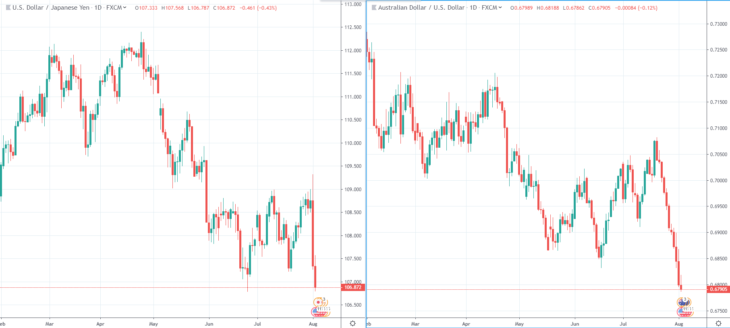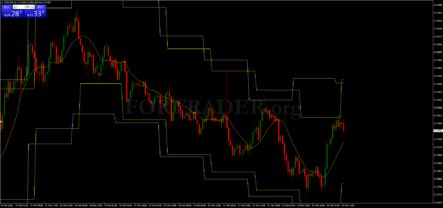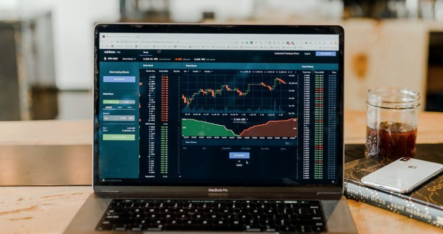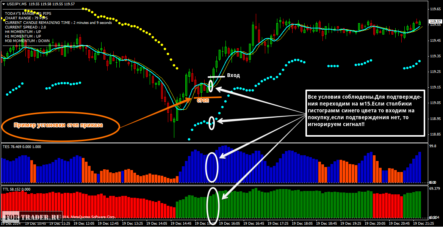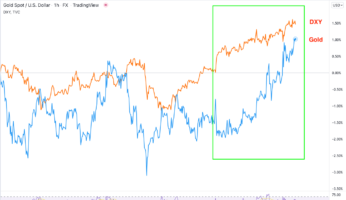It’s been a busy week on the market. President Donald Trump is on a rampage again. On Thursday the 1st of August he imposed more tariffs on China which essentially cover all Chinese imports, now including smartphones, computers, toys and other consumer products.
News of the additional 10% tariff on $300B in Chinese imports starting from September 1st sent the Wall street spiraling to the downside. The S&P 500 slid 0.9%, Dow Jones closed 1.1% lower, the Nasdaq lost 0.8% and Oil prices sank almost 8% which is the lowest drop since the beginning of 2015 (February).
“If they don’t want to trade with us anymore, that would be fine with me,” Mr. Trump said at the White House.
Trumps move will certainly escalate the ongoing trade war and Beijing may be preparing fresh measures of retaliation. There is of course a chance that President Donald Trump will withdraw his thread as we have seen in the past, especially as he finished his announcement with «We look forward to continuing our positive dialogue with China on a comprehensive trade deal, and feel that the future between our two countries will be a very bright one,».
What’s most important is that this new tariff strike comes a day after the FED lowered the interest rate to 2.25% while stating that this monetary easing is a precaution and further stimulus will not be required, which didn’t sit well with Trump as he tweeted:
“As usual, Powell let us down, but at least he is ending quantitative tightening, which shouldn’t have started in the first place — no inflation. We are winning anyway, but I am certainly not getting much help from the Federal Reserve!”
The new tariff, if imposed, will definitely open the probability door wider for more interest rate cuts in the near future.
The Nonfarm payrolls are schedule to be released today from the US and will be of high interest. Job growth is expected to slow this month with a forecast of 164K compared to 224K last month. Weaker employment data will have a bigger impact on the USD vs a stronger fact.
The Australian Dollar was probably hit the most by the announcement of new tariffs. China is Australia’s top trade partner, today the AUD/USD fell for the 10th consecutive day, bringing the pair to its lowest level this year due to fear of slower Chinese growth on Australia’s economy. This is also the longest continual weakness for the pair since 2008.
Australia released better than expected Retails sales today but that did not brighten the course of the AUD/USD as the pair continues to lower. The pair is currently travelling in the area of 0.6788 with short positions looking to be more favorable at this time.
The pair could see a reversal and regain some ground if the FED makes a dovish statement regarding further monetary policy easing or if the United States and China finally come to some kind of an agreement that will deescalate this ongoing trade war that continues to disrupt global supply chains.
USD/JPY was also hit. Safe haven Yen and Swiss franc rose against the USD and Gold increased by more than 1%. The pair remained under selling pressure on Friday morning, which added to Augusts decline and the pair is currently travelling below 107, retesting the July lows in the area of 106.780 – this support level is expected to be tested with all eyes on NFP and average hourly earnings.
